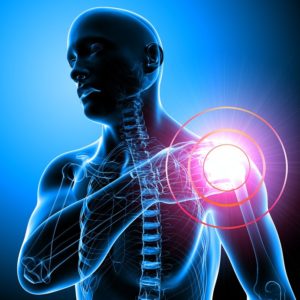
Author: Dr. Joseph Tauro, MD
Shoulder rotator cuff injuries are common. Sometimes they occur in older patients from wear and tear, but particularly among athletes and those involved in repetitive overhead activities. These injuries can be painful and limiting, but rehabilitation can be very effective. With the right guidance, you can perform much of the rehab yourself at home (although often a physical therapist may help supervise and teach you the proper exercises to start). This guide will help you manage your rotator cuff injury.

Understanding Rotator Cuff Injuries
The rotator cuff is a group of four muscles and their tendons that surround the ball and socket of the shoulder that stabilize the shoulder and allow for a wide range of motion. Injuries to the rotator cuff can include tendinitis, bursitis, and tears. These injuries often result from overuse, trauma, or degenerative changes.
Symptoms of Rotator Cuff Injuries
- Pain and tenderness in the shoulder, especially when reaching overhead or behind the back. This pain is most commonly felt laterally over the external deltoid muscle but can be more towards the back around the shoulder blade or more in the front near the biceps.
- Weakness in the shoulder
- Reduced range of motion
- Difficulty sleeping on the affected side
- Clicking or popping sounds during shoulder movement
Initial Steps: Consult a Specialist
Before starting any self-rehabilitation program, it’s crucial to consult with an orthopedic specialist such as Dr Tauro to get an accurate diagnosis and personalized treatment plan. Dr Tauro can assess the severity of your injury and recommend the best course of action, which may include imaging tests like an xray, and if you don’t get better with rehabilitation, an MRI or ultrasound.
At-Home Rehabilitation Techniques
-
Rest and Ice:
- Rest your shoulder and avoid activities that aggravate the pain.
- Apply ice packs to the shoulder for 15-20 minutes several times a day to reduce inflammation and pain.
-
Stretching Exercises:
- Gentle stretching exercises can help maintain flexibility and prevent stiffness. Examples include the pendulum stretch and the cross-body stretch.
-
Pendulum Stretch:
- Lean forward slightly and let your arm hang down. Gently swing your arm in small circles.
-
Cross-Body Stretch:
- Use your unaffected arm to lift the injured arm at the elbow and bring it across your body, holding the stretch for 15-30 seconds.
-
Strengthening Exercises:
- As your pain decreases, incorporate strengthening exercises to build the muscles around the shoulder. Use light weights or resistance bands to perform exercises like the external rotation and the scapular squeeze(a “low row” type exercise).
-
External Rotation:
- Lie on your side with the injured arm on top. Bend your elbow to 90 degrees and keep your elbow close to your body. Slowly rotate your forearm upward and then back down.
-
Scapular Squeeze/Low Row:
- Stand or sit with your back straight. Squeeze your shoulder blades together and hold for 5 seconds before releasing. Scapular strengthening can also be done with many home gyms or a rowing machine.
-
Range-of-Motion Exercises:
- These exercises can help restore normal shoulder movement. Examples include the wall crawl and the towel stretch.
-
Wall Crawl:
- Face a wall and walk your fingers up the wall as high as you comfortably can. Hold for a few seconds and then walk your fingers back down.
-
Towel Stretch:
- Hold a towel behind your back with one hand and grab the other end with the opposite hand. Pull the towel upward with your top hand and then pull downward with your bottom hand.
Professional Rehabilitation
-
Physical Therapy:
- Working with a physical therapist can accelerate your recovery and is a great way to learn how to do much of your rehabilitation ultimately on your own. A therapist can provide hands-on treatment, advanced exercises, and modalities like stims and ultrasound therapy to reduce pain and inflammation.
-
Follow-Up Appointments:
- Regular follow-up appointments with Dr Tauro are important to monitor your progress and make any necessary adjustments to your treatment plan.
Long-Term Maintenance
-
Consistent Exercise:
- Continue performing the prescribed exercises even after you’ve recovered to maintain shoulder strength and flexibility.
-
Proper Technique:
- Whether you’re an athlete or someone who performs repetitive overhead activities, ensure you use proper techniques to reduce the risk of re-injury.
-
Lifestyle Adjustments:
- Make necessary adjustments to your daily activities to avoid putting undue stress on your shoulder.

When to Seek Medical Attention
If you experience any of the following, seek immediate medical attention:
- Severe pain that doesn’t improve with rest and ice
- Sudden weakness in the shoulder
- Signs of infection, such as redness, warmth, or fever
- Inability to move the shoulder
Conclusion
Rehabilitating a shoulder rotator cuff injury requires patience, consistency, and the right approach. With a combination of professional guidance, formal rehabilitation and at-home exercises, you can effectively manage your injury and regain shoulder function. At AOSMI, we are dedicated to helping you recover and get back to your daily activities.
About the Author
Dr. Joseph Tauro is board certified by the American Board of Orthopedic Surgeons and is a nationally recognized expert in the treatment of shoulder, sports, and degenerative joint disorders. Dr. Tauro’s position at Rutgers Medical School and as a national lecturer on the latest orthopedic techniques assures patients will be provided with the finest care available. Patients with complex problems are often referred to Dr. Tauro from across the United States.
Don’t let a shoulder rotator cuff injury hold you back any longer. At AOSMI, our expert orthopedic specialists provide comprehensive evaluations and personalized rehabilitation plans to ensure your full recovery. Early diagnosis and treatment can significantly speed up your recovery and help you regain full shoulder function.
For more information or to schedule an appointment, visit AOSMI or call us at 732.907.8798. Take the first step towards recovery today and reclaim your shoulder strength and mobility!







